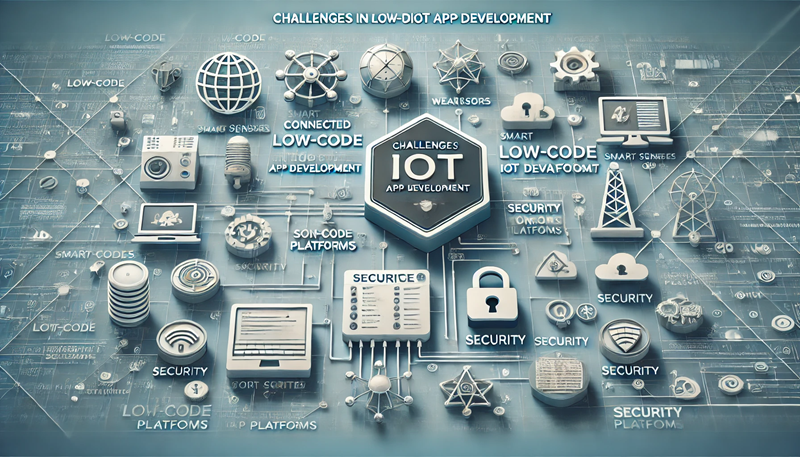The rise of low-code platforms has revolutionized application development, offering businesses a faster and more cost-effective way to build solutions. In the Internet of Things (IoT) space, these platforms promise to simplify the development of apps that connect and manage smart devices. However, despite their advantages, low-code IoT app development comes with its own set of challenges. This blog explores the top five challenges in low-code IoT app development and how to address them effectively.
1. Integration with IoT Devices: Bridging the Compatibility Gap
One of the most significant challenges in low-code IoT app development is integrating the platform with a wide range of IoT devices. IoT ecosystems consist of devices from various manufacturers, each using different protocols, communication standards, and APIs.
Why It’s Challenging
Low-code platforms often have pre-built connectors, but these may not cover all IoT devices. Incompatibility issues can arise, especially with legacy devices or proprietary protocols.
Solutions
- Use platforms that support universal standards like MQTT, CoAP, and RESTful APIs.
- Leverage middleware solutions to bridge compatibility gaps.
- Partner with device manufacturers to ensure seamless integration.
2. Managing Scalability and Performance in IoT Applications
IoT ecosystems generate massive amounts of data, and low-code platforms may struggle to handle the scale and complexity required for real-time processing.
Challenges
- Limited scalability of low-code platforms for high-traffic IoT applications.
- Performance issues when managing large datasets or processing complex analytics.
Strategies to Overcome This
- Opt for low-code platforms that offer cloud integration and distributed computing.
- Incorporate edge computing to process data closer to the source, reducing latency and bandwidth requirements.
- Regularly optimize and test app performance under load conditions.
3. Security and Data Privacy Concerns
With IoT apps, security and data privacy are paramount due to the sensitive nature of data being transmitted between devices and systems. Low-code platforms, while efficient, can sometimes lack the robust security features required for IoT applications.
Common Security Challenges
- Vulnerabilities in pre-built components or connectors.
- Risks of data breaches or unauthorized access.
- Inadequate encryption for data in transit and at rest.
Mitigation Measures
- Choose low-code platforms with built-in security frameworks, including encryption, authentication, and compliance with standards like GDPR and ISO 27001.
- Implement multi-factor authentication and secure API connections.
- Conduct regular security audits and vulnerability assessments.
4. Limited Customization Capabilities
While low-code platforms excel in simplifying development, they often come with limitations in customization. For IoT apps that require specific features or integrations, these constraints can hinder development.
Why This Matters
IoT applications often need to cater to unique use cases, such as custom dashboards, advanced analytics, or industry-specific protocols. Low-code platforms might not provide the flexibility needed to implement these features.
Approach to Address This
- Select platforms that allow extensibility through custom code or third-party plugins.
- Use open APIs to integrate additional functionality.
- Work closely with low-code platform providers to access advanced customization options.
5. Ensuring Reliability and Uptime in IoT Applications
IoT applications are often mission-critical, especially in industries like healthcare, manufacturing, and smart cities. Downtime or disruptions in app functionality can lead to significant consequences.
Challenges with Reliability
- Dependence on the low-code platform’s infrastructure.
- Limited control over system outages or failures.
- Difficulty in maintaining uptime for real-time IoT operations.
Best Practices for Reliability
- Use redundant systems and failover mechanisms to ensure app availability.
- Prioritize platforms with strong service-level agreements (SLAs) for uptime guarantees.
- Regularly monitor and test the app’s resilience to failures.
Navigating the Challenges of Low-Code IoT Development
Low-code platforms have undoubtedly made IoT app development more accessible, enabling faster deployments and cost savings. However, challenges like device integration, scalability, security, customization, and reliability must be addressed to unlock their full potential.
By choosing the right low-code platform and adopting best practices, businesses can overcome these obstacles and build robust, scalable, and secure IoT applications. As technology evolves, the synergy between low-code platforms and IoT will continue to grow, paving the way for innovative solutions that redefine industries.
